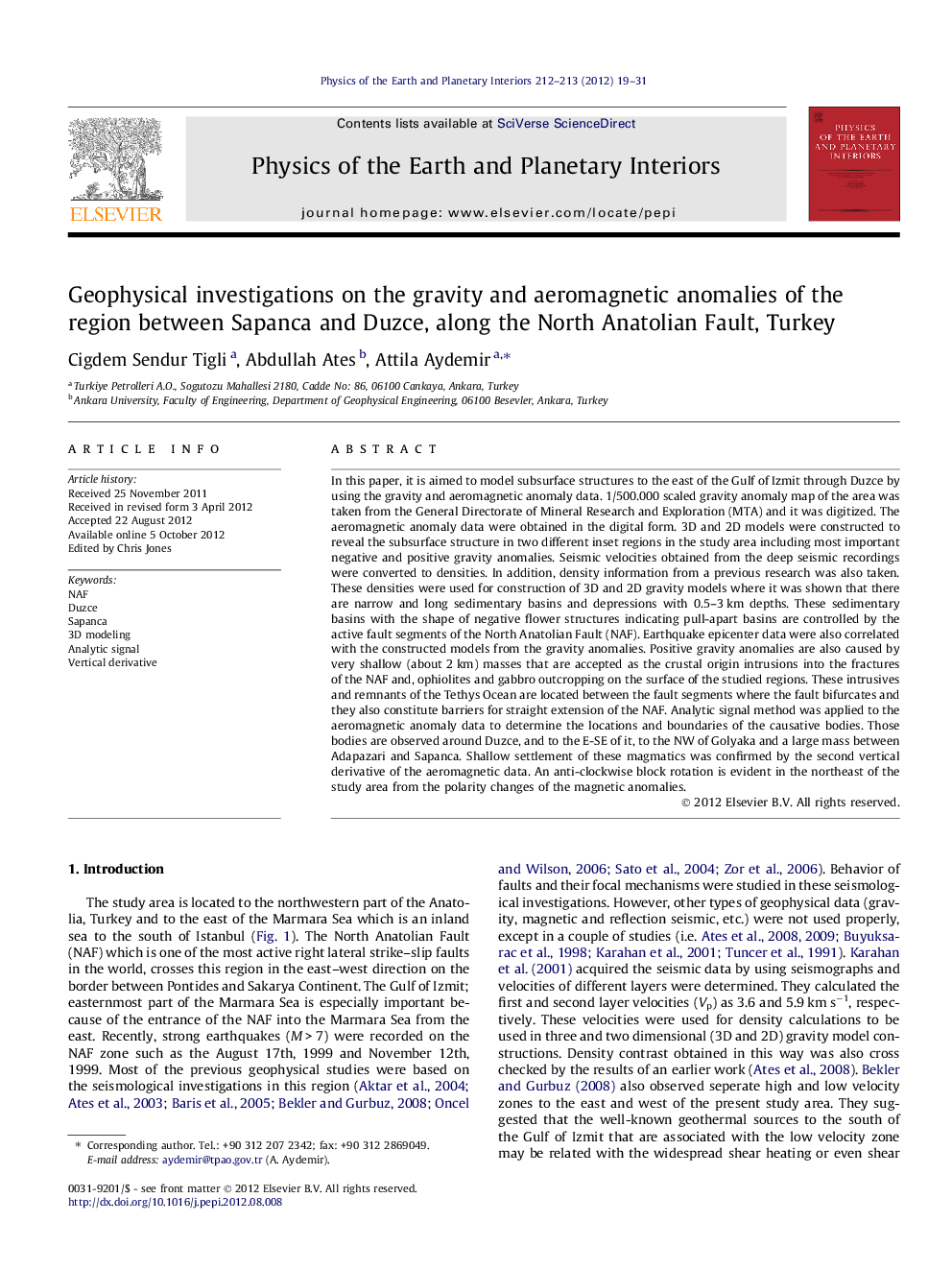| Article ID | Journal | Published Year | Pages | File Type |
|---|---|---|---|---|
| 4741730 | Physics of the Earth and Planetary Interiors | 2012 | 13 Pages |
In this paper, it is aimed to model subsurface structures to the east of the Gulf of Izmit through Duzce by using the gravity and aeromagnetic anomaly data. 1/500.000 scaled gravity anomaly map of the area was taken from the General Directorate of Mineral Research and Exploration (MTA) and it was digitized. The aeromagnetic anomaly data were obtained in the digital form. 3D and 2D models were constructed to reveal the subsurface structure in two different inset regions in the study area including most important negative and positive gravity anomalies. Seismic velocities obtained from the deep seismic recordings were converted to densities. In addition, density information from a previous research was also taken. These densities were used for construction of 3D and 2D gravity models where it was shown that there are narrow and long sedimentary basins and depressions with 0.5–3 km depths. These sedimentary basins with the shape of negative flower structures indicating pull-apart basins are controlled by the active fault segments of the North Anatolian Fault (NAF). Earthquake epicenter data were also correlated with the constructed models from the gravity anomalies. Positive gravity anomalies are also caused by very shallow (about 2 km) masses that are accepted as the crustal origin intrusions into the fractures of the NAF and, ophiolites and gabbro outcropping on the surface of the studied regions. These intrusives and remnants of the Tethys Ocean are located between the fault segments where the fault bifurcates and they also constitute barriers for straight extension of the NAF. Analytic signal method was applied to the aeromagnetic anomaly data to determine the locations and boundaries of the causative bodies. Those bodies are observed around Duzce, and to the E-SE of it, to the NW of Golyaka and a large mass between Adapazari and Sapanca. Shallow settlement of these magmatics was confirmed by the second vertical derivative of the aeromagnetic data. An anti-clockwise block rotation is evident in the northeast of the study area from the polarity changes of the magnetic anomalies.
► Different geophysical data and methods were consistently used in integration. ► NAF’s relations with the sedimentary basins are determined in this investigation. ► All anomalous masses including basins in northwestern Anatolia are very shallow. ► An anti-clockwise rotation was determined to the NE of the study area.
